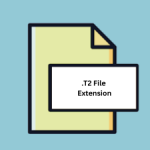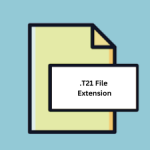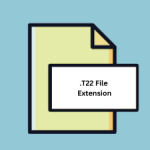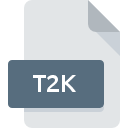.GBL File Extension
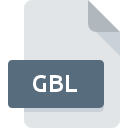
Gerber Bottom Layer Data File
| Developer | Ucamco |
| Popularity | |
| Category | Data Files |
| Format | .GBL |
| Cross Platform | Update Soon |
What is an GBL file?
.GBL file extension holds significant importance as it represents the Gerber Bottom Layer Data File. This file format plays a pivotal role in the fabrication of printed circuit boards (PCBs), aiding in the accurate depiction of the bottom layer of a PCB layout.
Understanding the origins, structure, and utility of .GBL files is essential for professionals engaged in PCB design and manufacturing.
More Information.
The inception of the Gerber format revolutionized the PCB manufacturing process by introducing a universal language for communicating design specifications.
Before its introduction, designers faced challenges in conveying intricate PCB designs accurately to fabrication facilities.
The Gerber format addressed this issue by providing a standardized representation of PCB layouts, ensuring precision and consistency across manufacturing processes.
Origin Of This File.
The Gerber format, named after its creator Joseph Gerber, emerged in the 1960s as a standardized means of conveying PCB designs to fabrication facilities.
Initially developed for pen plotters, this format has evolved over the decades to accommodate modern manufacturing techniques such as photoplotting and computer numerical control (CNC) machining. The .GBL extension specifically pertains to the bottom layer data of a PCB design.
File Structure Technical Specification.
.GBL file typically consists of ASCII text containing commands and coordinates that define the traces, pads, vias, and other features present on the bottom layer of a PCB design.
The file structure follows a specific format defined by the Gerber standard, with each command conveying essential information such as the type of object (e.g., trace, pad) and its coordinates on the PCB.
Key components of a .GBL file include:
- Aperture Definitions: Defines the shapes and sizes of the features on the PCB.
- Drawing Commands: Specifies the placement and characteristics of PCB features such as traces, pads, and holes.
- Coordinate Data: Provides precise XY coordinates for positioning PCB elements.
The technical specification of .GBL files adhere to the Gerber RS-274X standard, which ensures compatibility across various PCB design and manufacturing software platforms.
How to Convert the File?
Converting .GBL files to alternative formats or vice versa may be necessary to facilitate compatibility with different software platforms or manufacturing processes.
Several software tools and online services offer conversion capabilities, allowing users to transform .GBL files into formats such as Extended Gerber (RS-274X), Excellon Drill, or even proprietary formats specific to certain PCB design software.
To convert a .GBL file:
- Select a suitable conversion tool or service based on your specific requirements and preferences.
- Upload the .GBL file to the conversion tool or service.
- Choose the desired output format and any additional conversion parameters if applicable.
- Initiate the conversion process and wait for the transformed file to be generated.
- Download the converted file and verify its integrity and compatibility with the intended software or manufacturing equipment.
Advantages And Disadvantages.
Advantages:
- Universal Compatibility: .GBL files can be generated and interpreted by a wide range of PCB design software and fabrication equipment, ensuring interoperability.
- Accuracy: The ASCII-based nature of .GBL files allow for precise representation of PCB layouts, minimizing errors during fabrication.
- Efficiency: By encapsulating PCB design data in a compact, standardized format, .GBL files streamline the manufacturing process, reducing time and costs.
Disadvantages:
- Limited Dimensionality: .GBL files primarily convey two-dimensional (2D) PCB layouts, limiting their applicability for complex three-dimensional (3D) designs.
- Dependency on Aperture Definitions: Changes to aperture definitions can impact the interpretation of .GBL files, potentially leading to manufacturing errors if not managed properly.
- Lack of Native Intelligence: .GBL files do not inherently contain design intent information, requiring reliance on accompanying documentation for comprehensive understanding.
How to Open GBL?
Open In Windows
- Altium Designer: Altium Designer is a professional PCB design software suite available for Windows. It supports the Gerber format, allowing users to open .GBL files directly within the software.
- KiCad: KiCad is an open-source PCB design tool compatible with Windows. It provides robust support for Gerber files, enabling users to import and view .GBL files as part of their design projects.
- GerberView: GerberView is a lightweight, standalone application designed specifically for viewing Gerber files on Windows. Users can open .GBL files directly in GerberView for quick visualization and analysis.
Open In Linux
- KiCad: KiCad is also available for Linux distributions and offers comprehensive support for Gerber files, including .GBL extensions. Users can open .GBL files within KiCad’s PCB layout editor for viewing and editing purposes.
- Gerbv: Gerbv is an open-source Gerber viewer available for Linux systems. It provides a simple and intuitive interface for opening and inspecting .GBL files, along with other Gerber format variations.
Open In MAC
- KiCad: KiCad supports macOS, allowing Mac users to open .GBL files within the software’s PCB design environment. KiCad offers native compatibility with Gerber files, enabling seamless integration into the design workflow.
- Gerbv: Gerbv is also compatible with macOS and provides Mac users with a convenient solution for viewing and analyzing .GBL files. Users can open .GBL files in Gerbv to visualize PCB layouts and verify manufacturing specifications.
